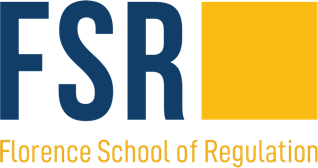Bridging Carbon Markets in a Fragmented Policy Landscape
Reflections from the LIFE COASE Net Zero Carbon Market Policy Dialogue on May 7
Environmental economists have long argued for integrating carbon markets to maximize environmental benefits. In practice, the number of Emissions Trading Systems (ETSs) has grown to 38 systems worldwide, but their integration has progressed slowly over the past years. At the same time, new opportunities for carbon market integration in the context of the UNFCCC and the Voluntary Carbon Market (VCM) are becoming increasingly tangible. Contributing to a better understanding of the obstacles and new prospects for carbon market integration was the aim of the Life Coase Policy Dialogue on ‘Advancing carbon market integration under Article 6’, which took place on 7 May during the EUI Climate Week 2025.
The policy dialogue was moderated by Simone Borghesi (EUI, University of Siena, EAERE), including a presentation by Baran Doda (adelphi), and a panel discussion with Nataliya Kushko (ERCST), Mette Quinn (European Commission), Xiliang Zhang (Tsinghua University) and José Pedro Bastos Neves (Ministry of Finance, Brazil). The event was concluded by Jos Delbeke (EUI).
The Current Carbon Market Landscape: Growth and Fragmentation
As of 2025, ETSs cover about 19% of global greenhouse gas (GHG) emissions. While established systems like the EU ETS, China National ETS, and UK ETS continue to evolve, new systems are also emerging. Currently, there are 20 systems under development or under consideration globally in places like Brazil, India, Türkiye, and Japan.
Despite this growth, significant fragmentation exists, which limits the prospects of carbon market integration. While some linkages between compliance markets already operate smoothly, such as those in the states of the Regional Greenhouse Gas Initiative (RGGI), between Tokyo and Saitama, California and Québec, and the EU and Switzerland, broader integration faces considerable hurdles.
Key Obstacles to Linking Markets
The discussion highlighted several critical barriers to linking different ETSs. First, more and more ETSs are adopting intensity-based caps rather than absolute caps. Intensity-based caps provide compliance entities with flexibility and can support ambitious targets provided the intensity benchmarks are set sufficiently stringent, and the design of the ETS and other climate policies in the jurisdiction are well coordinated. However, they introduce greater uncertainty compared to absolute caps. Notably, the EU ETS is legally restricted to linking only with systems that have absolute emissions caps. This difference in approach makes linking more challenging.
Second, the use of offset credits varies widely across ETSs, from being completely banned to being allowed for a significant portion of compliance obligations. The variety of crediting mechanisms and the resulting differences in credit types and quality add further complexity. This fragmentation poses a significant challenge, as systems are more likely to link if they share similar designs.
Lastly, each ETS reflects its national context and interests, resulting in different policy designs. In addition, political obstacles, including climate-skeptic governments and geopolitical factors, can delay international cooperation on carbon pricing. Linking requires common rules and economic conditions, as well as trust, which are not always present.
Promising Developments under Article 6
Despite the challenges in direct linking, new opportunities for cooperation are emerging, particularly through Article 6 of the Paris Agreement. Agreements reached at COP29 in 2024 substantially advanced the market mechanisms under Article 6.2 and Article 6.4. However, critical issues remain unresolved, such as ensuring transparency and environmental integrity of the mechanisms. Capacity-building needs in developing countries are also a key issue.
The latter issue was also picked up in the discussion, which highlighted the unique challenges faced by developing countries establishing carbon markets. The right decisions on cap setting, carbon credits and linking depend on the national context. The panel speakers emphasized the need for better exchange between the Global North and Global South and more careful analysis of impacts of carbon pricing on society and economic growth in developing countries. Multilateral cooperation and clear international regulation were seen as necessary preconditions for continued carbon market development.
Looking ahead, while direct linking of ETSs is complex, particularly across systems with very different designs, the dialogue suggested that indirect linking via Article 6 mechanisms and the VCM might be a more promising avenue. A “coalition of the willing” composed of parties with common ambition and principles could also help drive progress.
Find out more in the Policy Brief: State-of-play in international carbon markets 2025







